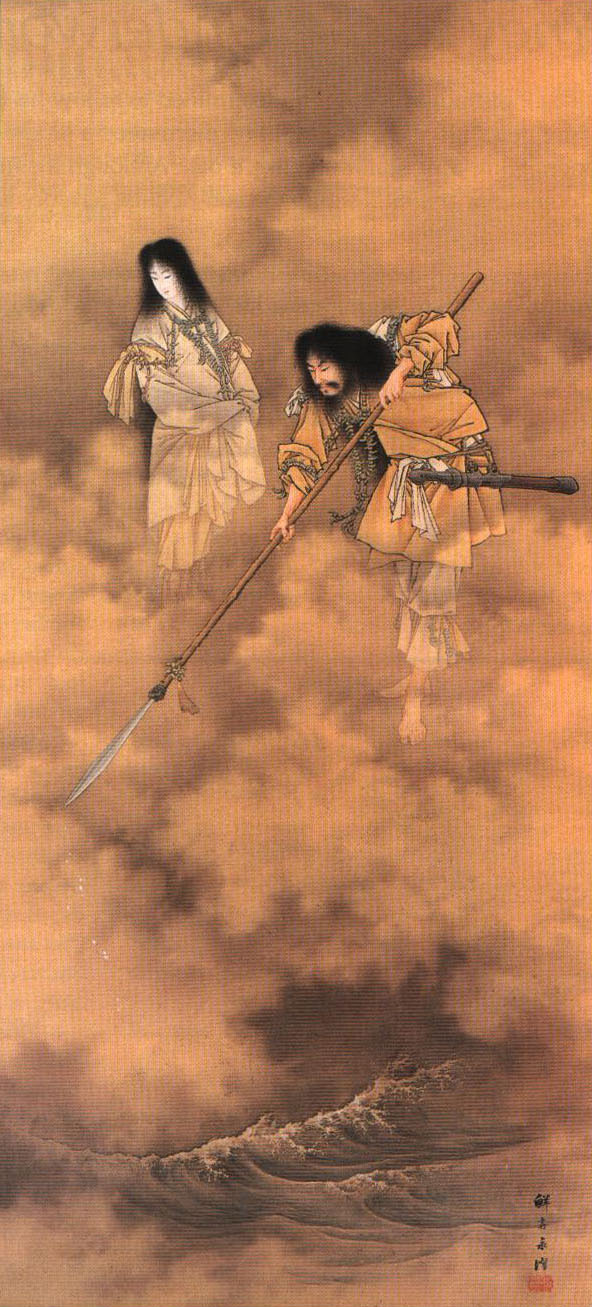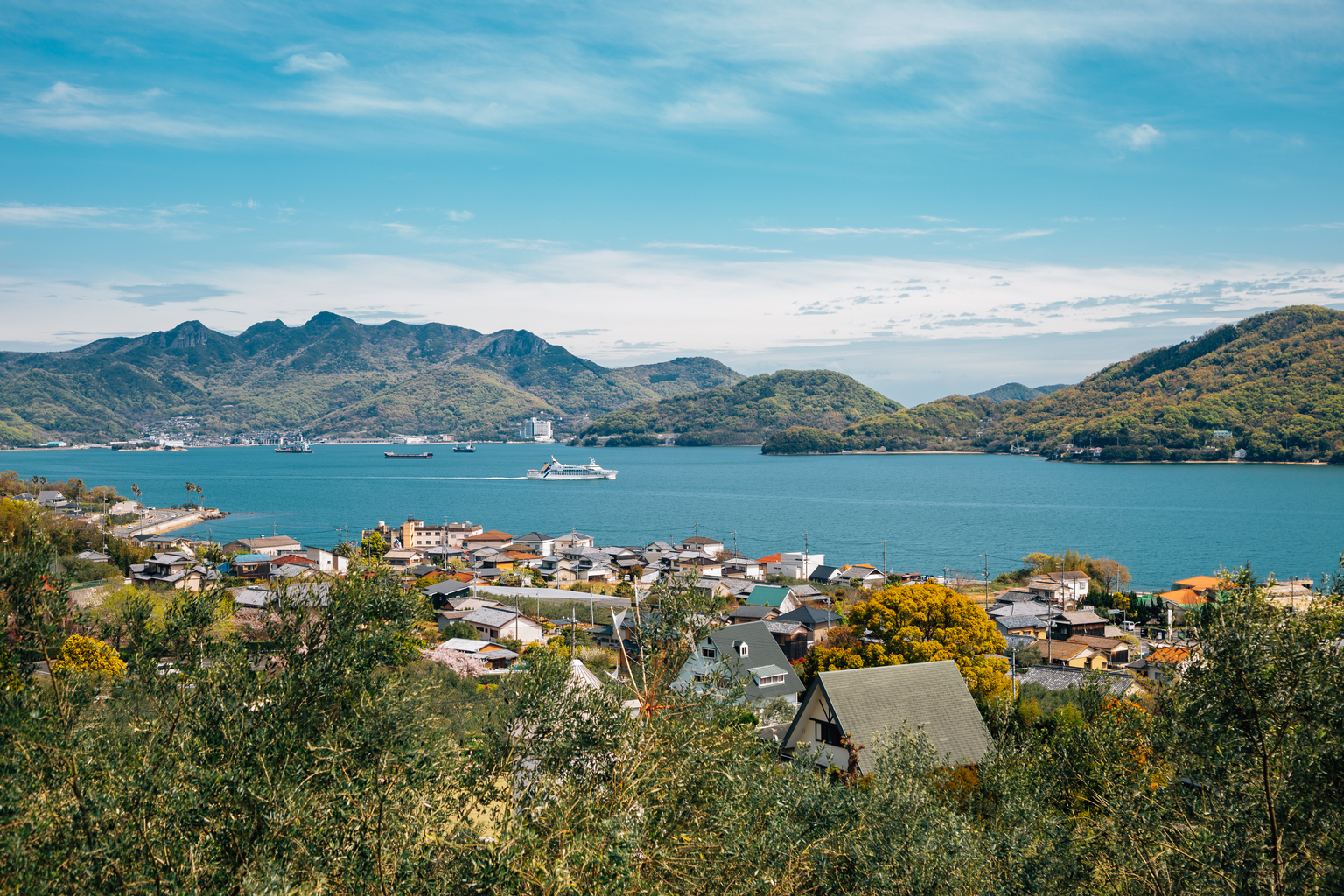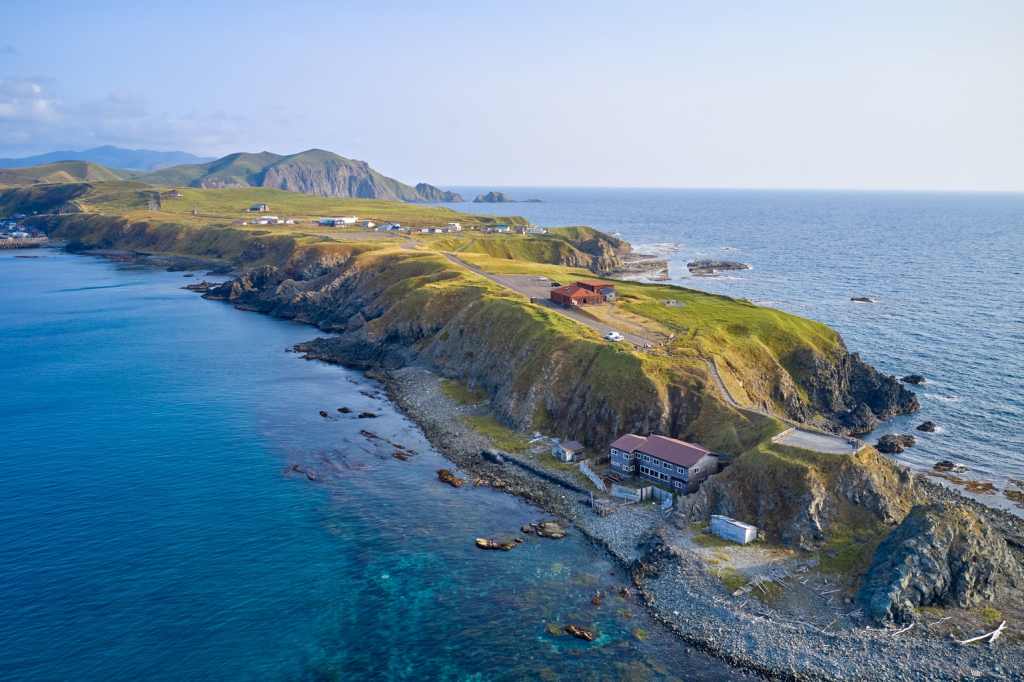In Japan, the term birthland takes on a whole new meaning. Modern Japan consists of nearly 7,000 islands, and according to the Kojiki — an 8th-century chronicle of Japanese myths and genealogies — many were literally birthed from the womb of the goddess Izanami.
The creation of the Japanese archipelago is said to have started when, as the Kojiki states, “the spirits of heaven all commanded the mighty one Izanagi and the mighty one Izanami with mighty words, proclaiming: ‘Make firm this drifting land and fashion it in its final form!’” Thus instructed, the male deity Izanagi thrust his (assumingly mighty) spear into the primordial water world below, and when he pulled it out, a drop fell from it and turned into Onogoro (also known as Onokoro), the aptly-named “Self-Shaped Isle.” There, Izanagi and Izanami proceeded to procreate Japan into existence.

Kobayashi Eitaku, Izanagi and Izanami, c. 1885.
From sv.wikipedia.org
Divine and Demonic Ancestry
Their first official child was Awaji Island, famous for its Naruto whirlpools and the grand Akashi Kaikyo Bridge, one of the longest suspension bridges in the world at nearly 4 kilometers in length, connecting the island to the city of Kobe. Awaji is also home to the Izanagi Shrine, said to be among the oldest Shinto shrines in Japan, where the demiurges reportedly once lived.
However, not all islands in the Seto Inland Sea have such a heavenly pedigree. The island of Megijima, for example, is today associated with Onigashima, the Ogre Island mentioned in the folktale of Momotaro, the ogre-killing hero born from a giant peach. Though the demons that Momotaro fought are now gone, the cave that they allegedly dwelled in is accessible to those visiting the island. In 2022, Megijima has also served as a venue for the Setouchi Triennale art festival.
Fertile Grounds for the Future
Izanagi and Izanami had seven more children during the first round of “land birthing,” including Shikoku, Kyushu, Honshu and Tsushima. Though not the most famous Japanese landmass, gamers will probably recognize the last one as the setting for the 2020 PlayStation game Ghost of Tsushima.
The Oki Islands were another of the original brood of eight islands, today home to the largest seaweed forest in the Sea of Japan, ushitsuki Japanese bullfighting, and the 800-year-old Iwakura-no-Chichisugi cedar tree. Its younger siblings include Iki and Sado islands, the latter of which has an oft-forgotten rich history. Literally rich, as the isle is the site of the Sado Kinzan Gold Mine. In operation for close to 400 years, the mine produced a total of 78 tons of gold and 2,300 tons of silver, all dug up from a 400-kilometer maze of mining tunnels stretching underneath Izanagi and Izanami’s offspring.
But the couple did not stop there. Their second set of island-children included, among others, Shodoshima. Today, Shodoshima is considered one of the most romantic places in the country thanks to its Angel Road, a 500-meter-long sandbar that only appears during low tide. It’s said that lovers who cross it while holding hands will be together forever.

The Northern and Southern Extremities
Notably missing from the list of Izanami and Izanagi’s progeny are Hokkaido and Okinawa, but that doesn’t mean they don’t have their own fascinating mythological origins. The Ainu of Hokkaido, for example, believed that the creator deity placed the world on the back of a giant trout called Moshiri Ikkewe Chep, or “Backbone Fish of the World.” Here, the world probably referred to Hokkaido and its many islands, like Rebun. Rebun Island is famous today for its picturesque hiking courses, endemic plant life, and for being the site of the last verified record of the sadly now-extinct Japanese sea lion in the 1970s.
The Ryukyuan creation myths are much more straightforward. According to the Chuzan Seikan scrolls compiled in 1650, the goddess Amamikyu, acting on orders from the Heavenly Emperor, used grasses, trees, and stones to create the Ryukyu Islands starting with Okinawa [p.30]. One would assume that her work also included Osumi in the north, as well as Yonaguni, the island chain’s and Japan’s westernmost island located just 108 kilometers from Taiwan. Known today as a global scuba-diving destination with pristine beaches and its diminutive Yonaguni horses, the island’s image wasn’t always so family-friendly. Historically, Yonaguni was known as Nyogogashima, the mythical “Island of Women” that featured in many “adult-themed” works of art during the Edo Period.
Regardless of the reality of how the Japanese islands got here, their spark of the divine is undeniable, and one could spend their entire life discovering it on isles big and small.









